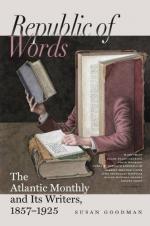On the left of the chairman is another lady, whose name is well known in literary circles. She is not Welsh by birth, though she is so by marriage,—she being united to one of the great iron-masters. She has a large face, open and cheerful-looking, if not handsome. The forehead is broad and white,—the eyes dark and lustrous. Formerly she was known to the reading world as Lady Charlotte Lindsay; now she is Lady Charlotte Guest; a woman than whom very few archaeologists are better acquainted with the Welsh language and its ancient literature. She is the author of that very learned work, “The Mabinogion,” a collection of early Welsh legends. This book was printed a few years since by the pale-faced, intelligent-looking man who is standing behind her chair,—Mr. Rees,—a printer in an obscure Welsh hamlet, named Llandovery. He has, with perfect propriety, been termed the Welsh Elzevir; and certainly a finer specimen of typography than that furnished by the “Mabinogion” can scarcely be produced.
The chairman is a pompous old nobody. Him I need not describe. The presiding and directing spirit of the place is a tall, slender gentleman with snow-white hair, dark, flashing eyes, and a graceful bearing; it is the Rev. Thomas Price, or, as his Welsh title has it, Carnuhanawc. He is a thorough believer in the ultra-excellence of everything Welsh,—Welsh music, Welsh flannels, Welsh scenery, Welsh mutton; and so far as regards the latter, I am quite of his opinion. After a very animated speech, he directs the competitors on the triple harp to stand forward and begin a harmonious contest.
There are three,—an old blind man, a young man, and a girl some fourteen years of age. Every one cheers the latter lustily, and “wishes she may get it.” So do I, of course; and I listen with great interest as Miss Winifred Jenkins commences her performance, which she does without blush or hesitation, and with quite an I-know-all-about-it sort of air. I forget the particular piece the young lady played; but upon it she extemporized so many variations, that long before she came to an ending I had lost all remembrance of the text from which she had deduced her melodious sermon. There was, I thought, more mechanical tact than expression in her performance, but it was enthusiastically applauded for all that; and with an awkward curtsy—much like Sydney Smith’s little servant-maid Bunch’s “bobbing to the centre of the earth”—the red-cheeked little harpist vanished.




